Inside the unregulated tiny house movement, where some people say builders do shoddy work or don't deliver at all: 'It turned into the Wild West'
Frank Olito

- Lindsay and Eric Wood had paid $65,000 for a $90,000 tiny house when the construction company went out of business, leaving their home half-finished.
- But that wasn't the only problem — they said what had been built had not been done so correctly. The house had the wrong tires and axles, and had a wrongly sized hatch.
- Other tiny home owners shared similar experiences, and their accounts point to a larger issue within the tiny house movement: Construction is unregulated, leaving owners vulnerable to shoddy work and companies going out of business.
- Zack Giffin, host of "Tiny House Nation," said the absence of a uniform set of guidelines for building tiny houses means some companies are cutting corners and delivering sub-standard work.
If you Google the term "tiny house," you'll probably find eye-candy photos of small spaces expertly decorated. You may find the hit Netflix series "Tiny House Nation" that shows everyday people easily downsizing their lives into mini-mansions.
But for some of the people actually living in the tiny house movement, that's not the reality. In fact, there's a side of the movement that many don't talk about.
Lindsay and Eric Wood, who run a tiny house consulting business to guide owners through the building process, were excited to join the movement after reading about downsizing for years. After spending thousands of dollars on their home, however, their contractor went out of business mid-build. They say they were left with an incomplete tiny house and sub-standard work.
Other homeowners shared similar experiences with Insider, pointing to a larger issue in the tiny house movement.
In 2017, Lindsay and Eric Wood calculated how much money they had spent on rent over the previous seven years in Marin, California, and realized it was time to buy a home.
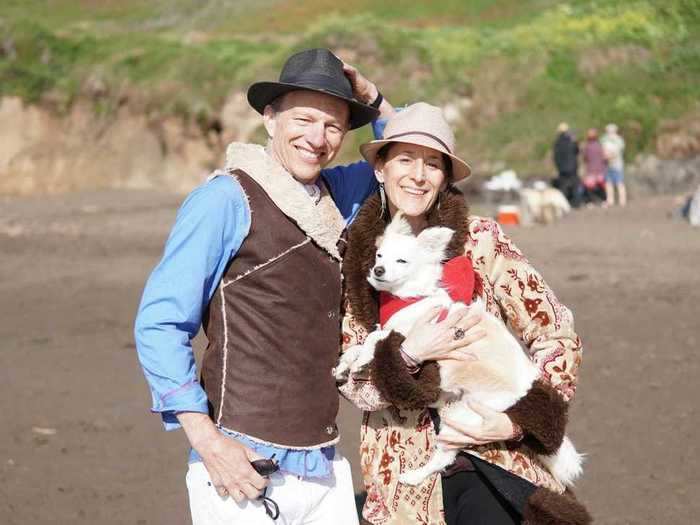
They learned they had spent $108,000 on rent, so they knew it was time to own a piece of property. But their house search didn't go as planned. They were outbid on several homes and three properties of land. In the end, they realized their budget was too small and increasing it would just mean they would have to overwork to make ends meet.
At that point, they were frustrated and made a big decision.
"We were like, that's it," Lindsay said. "We're done. Let's go tiny."
In November 2017, the Woods went to Arlington, Texas, to attend a tiny house festival and found a builder on the last day.
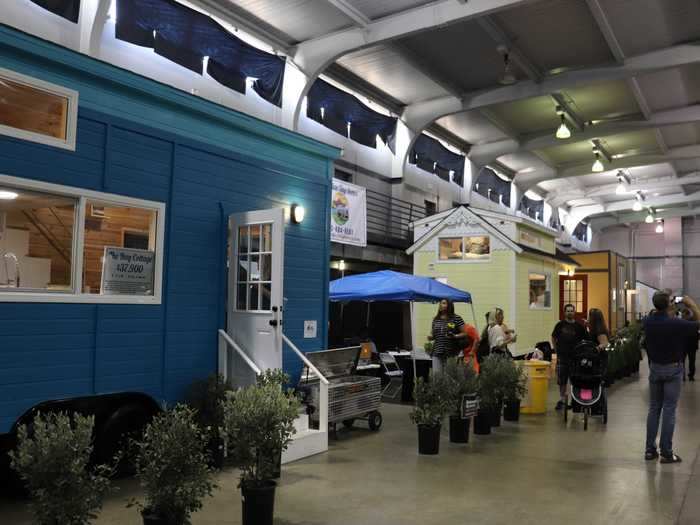
Lindsay said they went to the festival with the intent to find a builder that would design and build a custom tiny house. They chose to design their own house because "we wanted it so specific. We wanted it to be built for our lives." The Woods also had the budget to customize their home — they just needed a builder to do it for them.
"We went there and found the builder on the last day, the last hour," Lindsay said. "We were so excited."
They had found Alpine Tiny Homes. Lindsay said she liked that they sat down with her and Eric to discuss what they wanted right away.
"They were personable," she said. "We liked some of the aspects that their tiny homes were about. We also had enough time to sit down and chat. It's not a quick decision."
Lindsay and Eric started working with Alpine Tiny Homes in Utah and designed a tiny house with the company's builder.
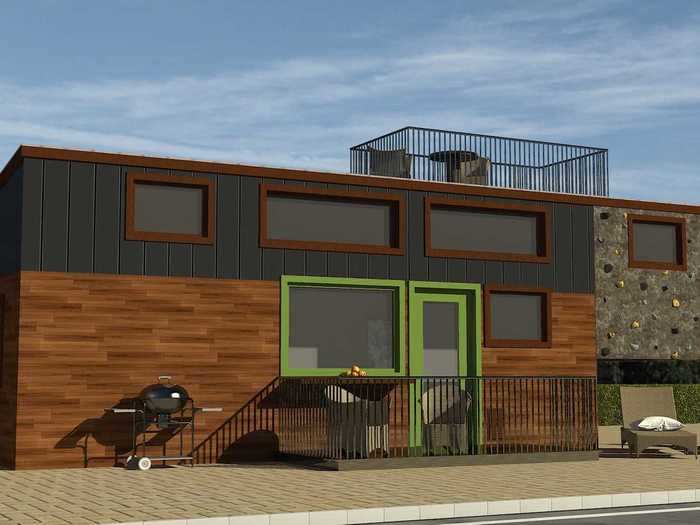
The Woods started working with Alpine Tiny Homes in November 2017 and then agreed on a quote in January 2018.
The median cost for a tiny house in the US is $59,884, but the Woods said they agreed on a $90,000, top-of-the-line tiny house. Lindsay said this was a bargain for the amenities, which included a rooftop deck and a rock-climbing wall.
Over the next several months, Eric and Lindsay worked with the company via email and phone. They expected the process to take around three to four months, which is the norm in the industry. Lindsay said she would regularly get visual updates of their home since Alpine Tiny Homes was in Vineyard, Utah.
Midway through the build, the Woods received a nightmare phone call: Alpine Tiny Homes was going out of business and only half of their tiny house was built.
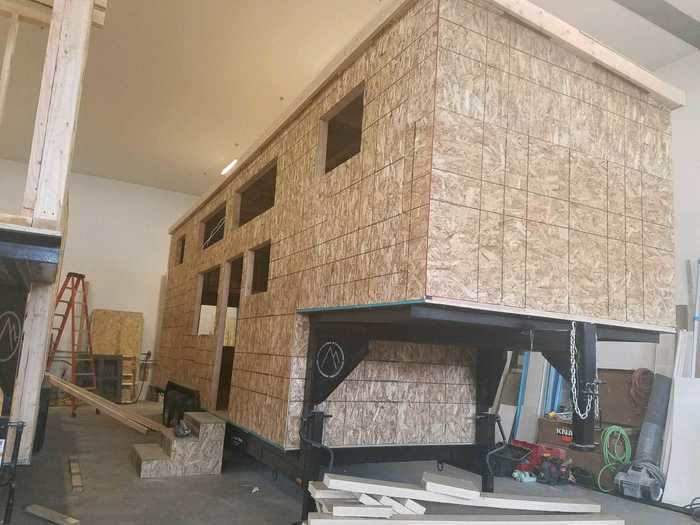
"[The builder was] someone we relied on that had the right certifications," she said. "They had checked all the right boxes, they had done 20-something custom builds, they had a beautiful website, and they had a beautiful show model."
Yet Lindsay said things started going off the rails in July. Although it usually only takes four months to build a tiny house, Alpine Tiny Homes was still not finished with the Woods' home seven months after agreeing on the price. Lindsay said the company kept promising that it would be finished in just a couple more weeks.
Eventually, they learned that Alpine Tiny Homes had gone out of business and that their home was not finished. Brian Hawkins, who ran the sales and marketing for the company, would not give a specific reason as to why the company went out of business.
The Woods said they had to pay $65,000 for their incomplete tiny house. At that point, it was just a shell, meaning there was no interior and some of the windows were missing.
"You can basically buy an entire tiny home for $65,000," Lindsay said.
Hawkins told Insider he understood why the couple was upset with the house.
"The situation surrounding Lindsay Wood's home is definitely a difficult one, and I completely understand why she was upset about it. We all were," he said. "My heart goes out to the Woods, and I wish them the best on their tiny house journey."
When the couple picked up their tiny house in Utah, Eric and Lindsay learned just how much of the final product they were missing.
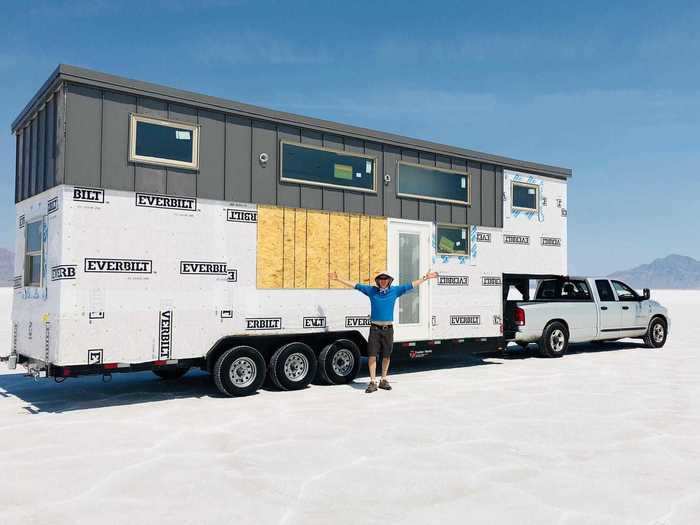
They went to Utah to pick up their home, and Lindsay said she can remember that it was 100 degrees that day. As she sweated through her clothes, Lindsay was walking through her incomplete tiny house, realizing how much was missing.
For example, she said the house didn't have the solar panels, the rooftop deck, the dropdown patio, nor the rock climbing wall that Alpine Tiny Homes promised. It also had no appliances, and it didn't have the 6-foot window that Lindsay wanted. Instead, there was a piece of plywood where the window was meant to be.
The company asked Lindsay and Eric to sign an As-Is agreement, which meant that the builder was not responsible for any mistakes that were found later. This is not common for tiny house buyers, but Lindsay said it felt like they had to accept the incomplete tiny house or they were not allowed to take it off the lot.
"[I felt] totally overwhelmed," Lindsay said. "It was a punch in the gut."
Ultimately, they decided to sign the As-Is agreement, which is the reason they didn't take legal action later on.
The bad news kept coming. Not only was the house not finished, but the couple said they found building mistakes throughout the tiny house.
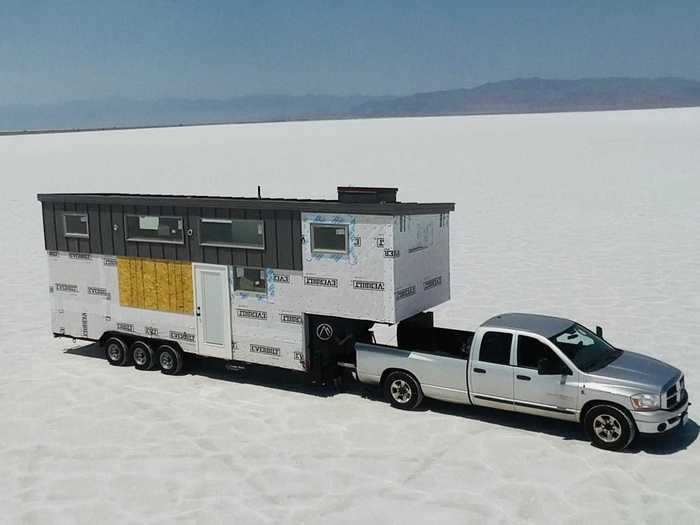
They said the hatch on the roof was too high, which meant they would hit any overpass when driving down the road. They said the roof was also poorly insulated, so they experienced a leak the first time it rained. Since there were no appliances, the house had no tanks for water, causing them to redo all the plumbing in the bathroom.
Perhaps most dangerously, Lindsay said the builder put the wrong tires and axles on the trailer.
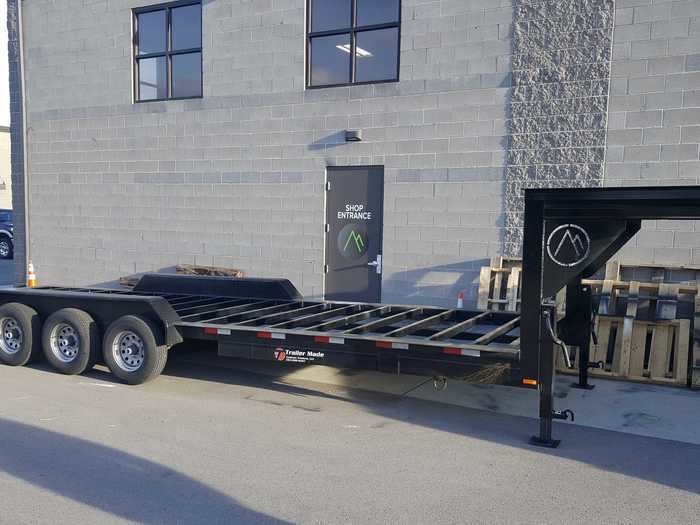
After traveling for two days with their tiny house, Lindsay and Eric said they learned the axles and wheels of the trailer were wrongly sized for their house. It turned out their home was too heavy and the axles they were given could not support their tiny house. When they had another builder, J&R Trailers, look at their home, they learned that the axles were completely bent from withstanding the weight of the home.
Jacob Brown, an employee at J&R Trailers, said when he first saw the house, it was "bottoming out."
"The house was underbuilt, and it needed to be a lot more beefed up to be safe," Brown told Insider.
Hawkins, of Alpine Tiny Homes, told Insider the company paid for the Woods' inspection of the house so they could get a Pacific West Homes sticker that allows them to park in RV parks around the country.
The Woods are not alone. The tiny house movement is unregulated, leaving many owners vulnerable to poor work.
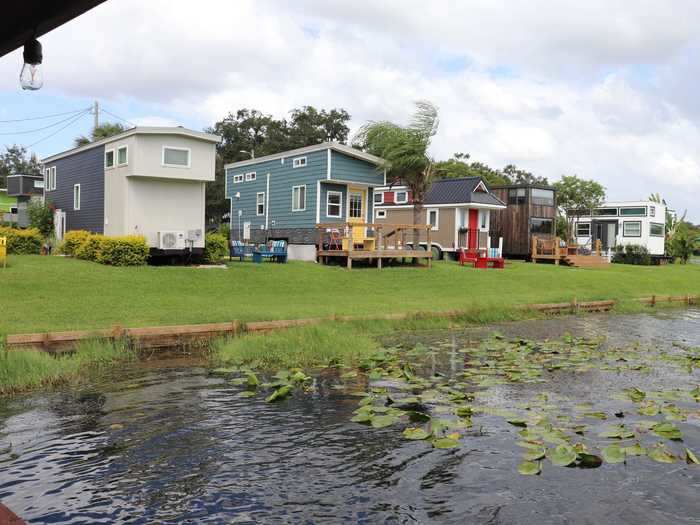
As of now, there is no federal building code that regulates tiny houses specifically. According to most state building codes, tiny houses are most commonly categorized as RVs. But the RV codes typically only require builders to follow basic fire safety, electrical, plumbing, and basic emergency egress. It does not say anything specific about tiny house safety.
There is an Appendix Q, however, in the IRC building code, which regulates ceiling heights, lofts, stairways, and ladders. But that code only includes tiny homes on a foundation and not on wheels. Plus, local governments have to actively vote Appendix Q into law, and only a few states have done that so far.
So, what does that mean for the tiny house movement? Since there is no federal oversight of tiny house building, it's possible for tiny house businesses with little to no experience to operate.
Zack Giffin, the host of "Tiny House Nation," said the tiny house movement is like "the Wild West" right now.

"One thing that we are absolutely essentially lacking in this industry is a uniform set of definitions for what makes a building a tiny home ... the result is that it turned in to the Wild West," Giffin told Insider. "All these builders that are screwing people over and not building up to the standards that we would be expecting would not be able to do that if we had these universal definitions."
Giffin offered another reason for this trend in the movement. He said his show, "Tiny House Nation," perpetuated the idea that tiny houses are cheap, but in reality, they do cost a lot of money to build.
"This comes from the original perception that these homes could be done for $15,000 and that as soon as you find a builder and they want to charge $50,000, people are pulling their hair out thinking this is a rip-off," he told Insider. "Instead of just arguing on that, the builders are going to do whatever they can to lower the price and get it more in line with what people are wanting. You start hammering builders on price, and they start cutting corners."
This means that some builders are getting away with cutting corners — or they're not even building the home buyers paid for.
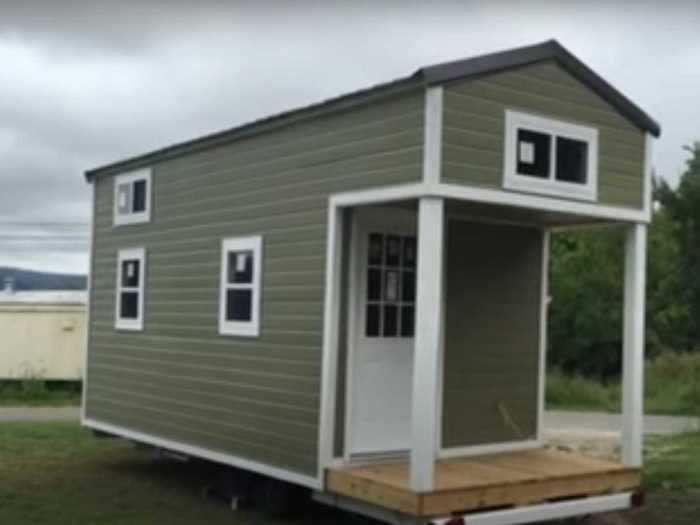
In a lawsuit filed in November 2019, Attorney General Leslie Rutledge sued Scott Stewart of Slabtown Customs in Mountain View, Arkansas, after eight customers complained that he took their money and never built the tiny homes they were promised.
One person mentioned in the suit claimed they paid Stewart an $8,000 deposit and an additional $3,636.94 for customization in 2014. When he was supposed to deliver the home, he said he had "dropped and damaged the tiny house on the day before delivery." He later told the consumer that he had not finished the home in time. Five years later, and the complainant still has not received a tiny house nor a refund.
"No matter how 'tiny' the job is, contracts must be fairly followed and projects completed," Attorney General Rutledge told Insider. "Families made an investment in their future that Stewart could not deliver. I don't want another customer taken advantage of with the hopes and investment in a new home that never becomes a reality."
But bad building practices, like those the Woods say they experienced, are much more common. A couple in North Carolina has a similar story.
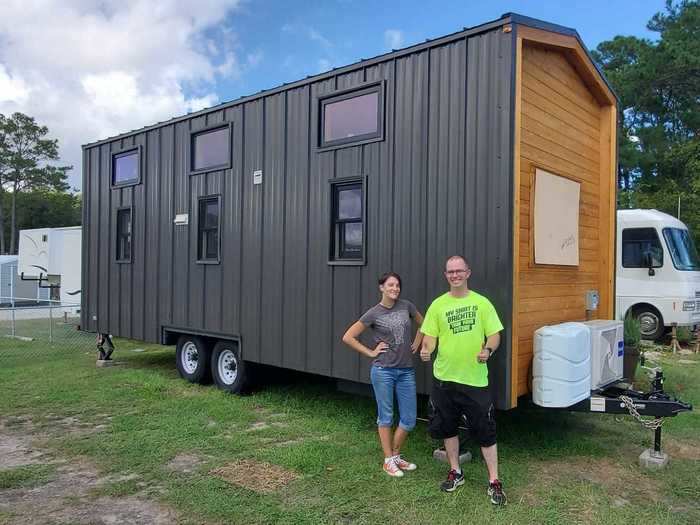
Working in the Marines, Matt Mueller and his wife move around a lot, so they decided the tiny house lifestyle would be perfect for them. They partnered with Tumbleweed Tiny Houses to create the tiny house of their dreams. But before getting the chance to design a custom home, the company told the couple they should buy one of the homes that was already built. Tumbleweed Tiny Houses sent the couple pictures of the house and said it included free upgrades.
"It looked phenomenal," Mueller told Insider, so they bought the 300-square-foot home in September 2019 for $97,000.
When the house was delivered to them, however, Mueller instantly saw that one of the windows was broken. It caused a leak onto Mueller's surround sound system. He contacted Tumbleweed and he said they were very defensive but eventually sent him a new window, which Mueller had to put in himself.
A few weeks later, he learned that the hot water pump was also broken. Although they did not have to pay to fix this problem, the couple did have to travel to different places to shower each day for three months.
Tumbleweed's lawyer, David J. Warner, told Insider, "During the course of repairing the Mueller's warranty items, they started making frivolous claims which were all disputed by Tumbleweed. They have since fired their attorney, cut off communication with Tumbleweed and have taken to airing their grievances online through inaccurate statements."
Like Lindsay and Eric, Matt Mueller said he also found out his axles are wrongly sized.
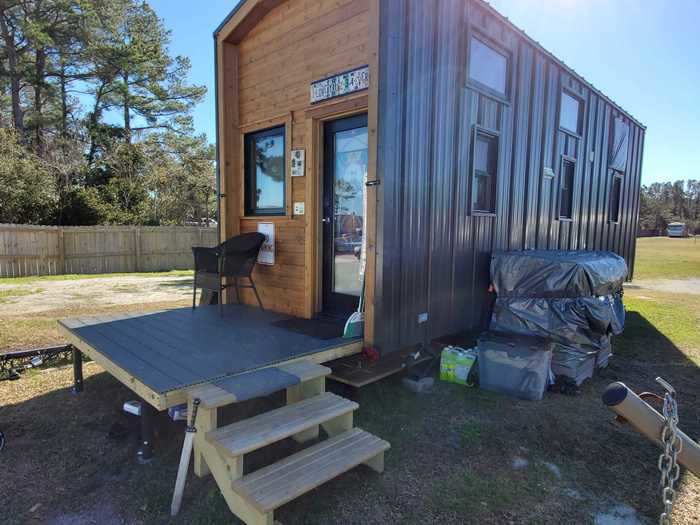
When Mueller was about to put a deck on his home, a mechanic told him he shouldn't because the axles are already too small for the size of the home. Mueller contacted Tumbleweed again, but the company filed for Chapter 11 bankruptcy.
To fix this issue, Mueller has to spend $8,000 on new axles and $3,000 on labor. For now, the couple is stuck where they are because they cannot move their home with the current axles because it is too dangerous.
"We're not discouraged, not by a long shot," Mueller said. "If anything, we are resilient and angry at Tumbleweed."
Misty Gilley, a tiny house owner in Orlando, said she was also screwed over by her builder.
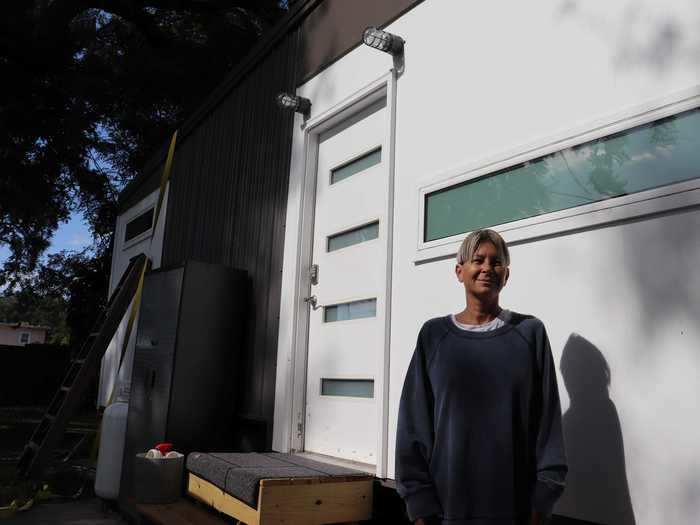
Gilley said she paid a contractor — whom she wishes not to name — $40,000 to build the frame of her tiny house. When it was finished, Gilley slowly realized that much of her house was built wrong. She said her floorboards were shifting, her electrical was wired incorrectly, and her plumbing was not working. Additionally, indoor materials were used for her outdoor siding, which could be easily damaged in the Florida weather.
In all, Gilley has paid an extra $40,000 to fix the mistakes she says her builder made.
"Because [the tiny house movement] is not code-enforced, you have to watch out," Gilley told Insider. "You can't trust that anyone knows what they're doing because it's still so new."
For the next eight months, Lindsay and Eric Wood finished the home themselves and spent an extra $40,000 fixing all the mistakes they say their builder made.
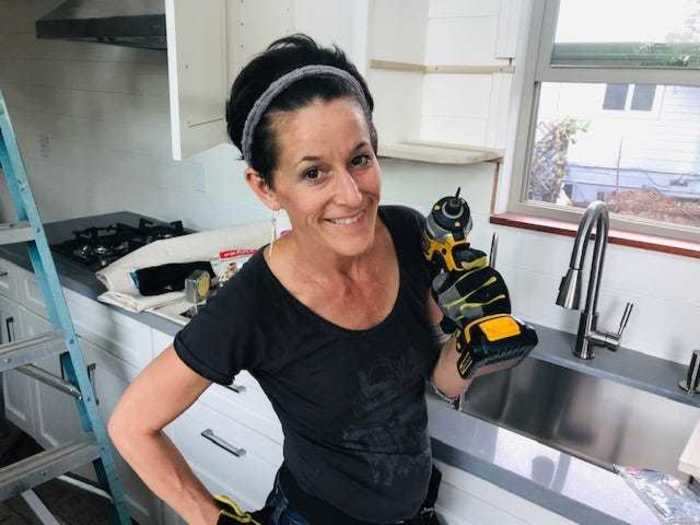
Lindsay said it cost $5,400 to change the axle and tires, $1,500 to change the plumbing, $1,000 to change electrical from solar to inverter battery, and $500 to fix the hatch. Lindsay and Eric also had to finish the entire interior by themselves.
After three months and shelling out an extra $40,000, the couple finally finished their tiny house.
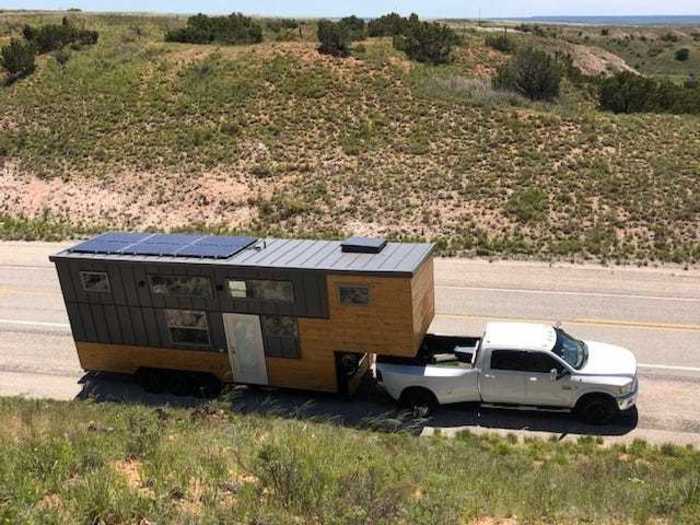
Lindsay and Eric had to hire an electrician and plumber to fix the mistakes, but they did the rest of the work themselves. In all, Lindsay said they spent $105,000 on their tiny house.
Today, their 300-square-foot tiny house is the home they had envisioned.
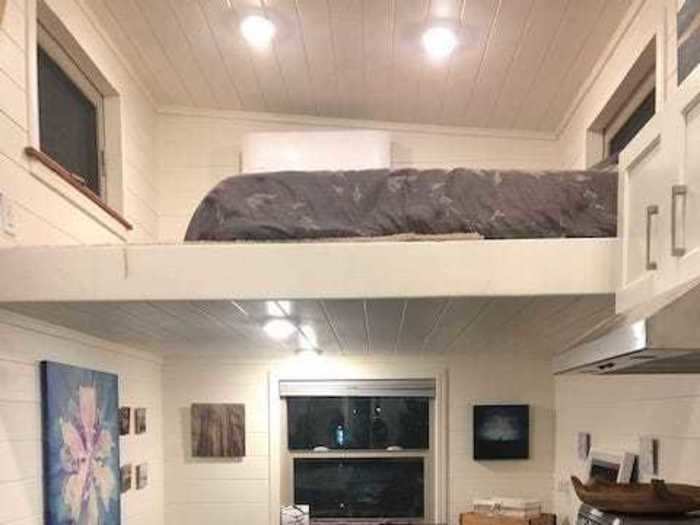
It includes a main living area with a kitchen with white cabinetry and stainless steel appliances, living room, and lofted bedroom.
After they fixed the plumbing issues, the bathroom is fully operational, too. It includes a full soaking bathtub that can be turned into a steam room, as well as a working a sink and a toilet.
There are smart storage options, too, such as a kitchen table that folds out into four different configurations to save space and a crawl-in closet where Lindsay and Eric keep most of their clothing.
Although it seems like the perfect home now, they said they still feel the effects of the building experience.
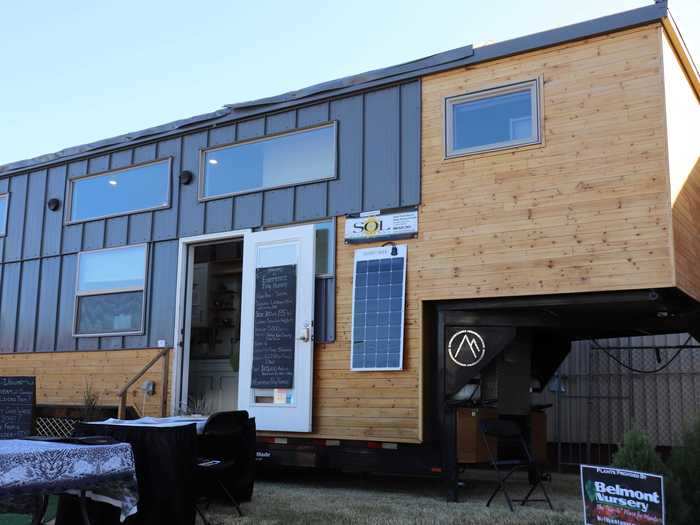
Lindsay said she still remembers the anger from her tiny house experience. She can even remember the fights and "outbursts" she and Eric had under the pressure.
"It was a tough moment in our marriage," Lindsay said. "We definitely still feel it. We encumbered a lot of debt that we still have to dig out of. It's a major part of our story."
Although they experienced the worst of it, the Woods turned their bad experience into a positive one and now help people who are looking to go tiny.
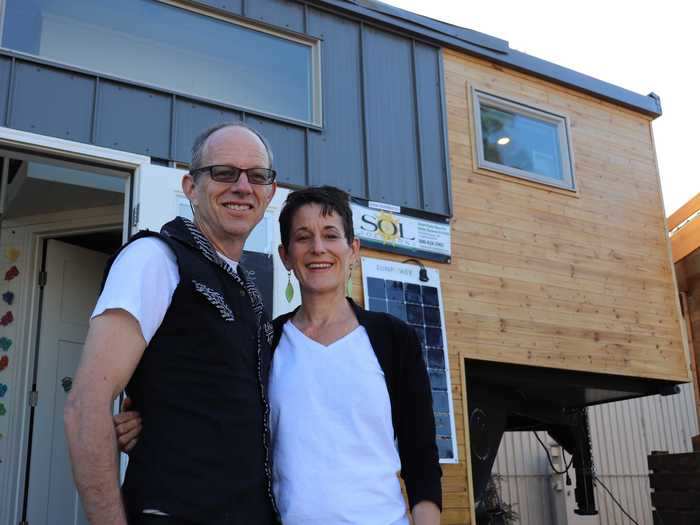
Lindsay now runs a tiny house consulting business to help people avoid the experience she had, but she said, in the end, it all worked out perfectly.
"We went through the hardships so you don't have to. Learn from our mistakes," Lindsay said. "Yes, we have to look back and go, 'That was a pretty big, intense experience,' but we are grateful. Now we can turn around and help people on going tiny."
- Read more:
- A single mom, 2 kids, and 2 dogs all fit inside a 270-square-foot tiny house. Here's how they make it work.
- A couple lives with their 3 children in a 300-square-foot tiny home that cost them $24,000 to build. Take a look inside.
- 25 disappointing photos that show the ugly truth of living in a tiny house
- 17 photos that show the ingenious ways tiny house owners store their belongings
READ MORE ARTICLES ON
Popular Right Now
Popular Keywords
Advertisement